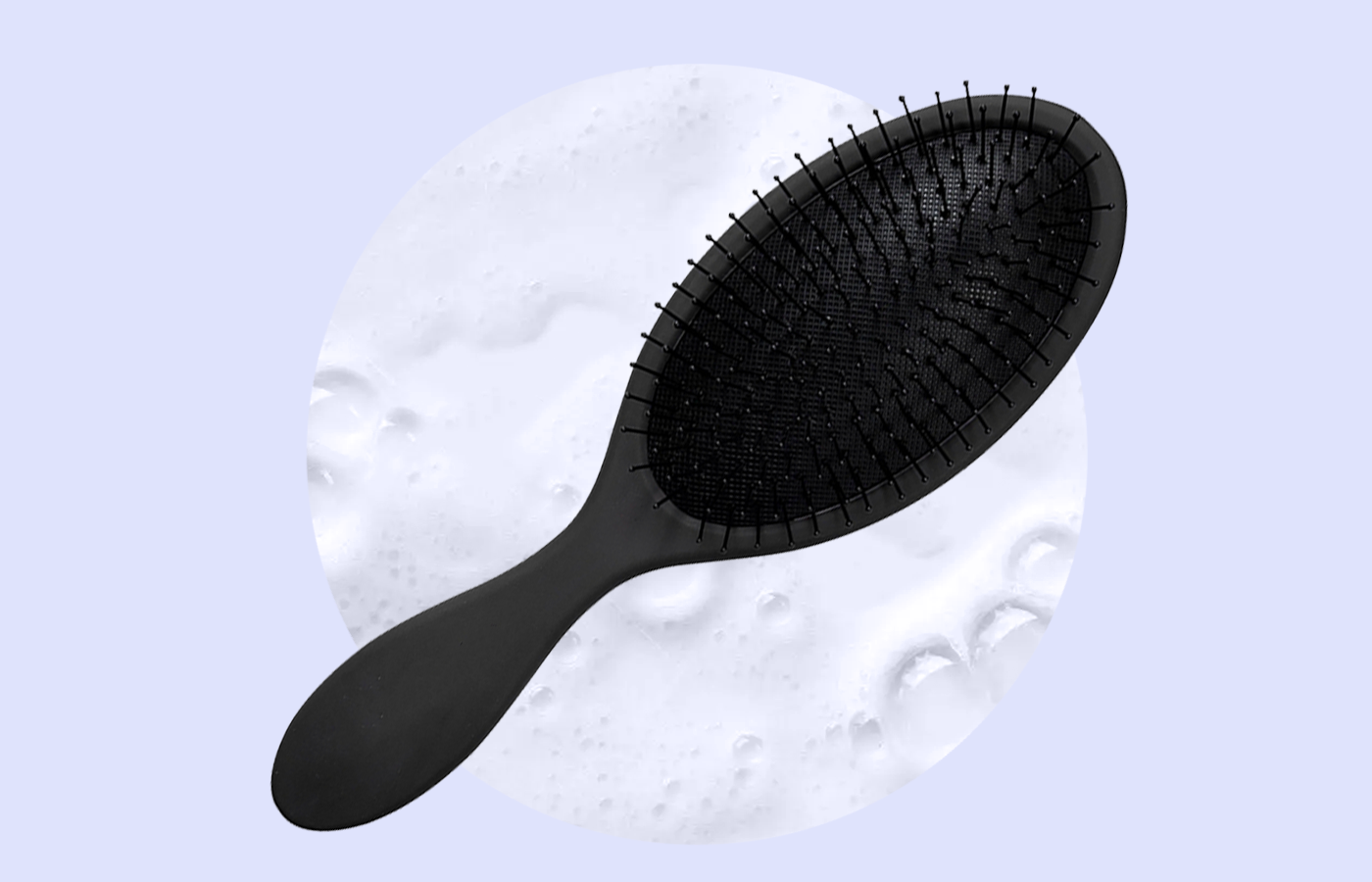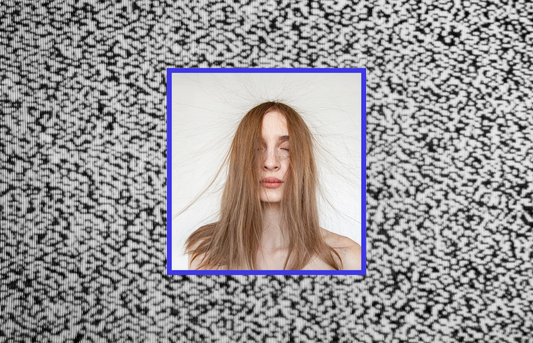How to Clean Your Hair Brushes Because Yes, They're Harming Your Hair
And they're absolutely full of bacteria!
In this article
In recent years (if you were lazy like me and avoided the tip for a while), washing makeup brushes has become the non-negotiable key to better skin. And it makes sense: your makeup brushes hold a ton of facial oils, leftover product, and bacteria. So what makes our other styling tools any different? If you go through the trouble of washing your hair at all, then you’ll hate to hear what you’re transferring onto strands when you don’t wash your hairbrushes.
Hairbrushes, the densely bristled little nests that they are, accumulate more bacteria than a sink plug (a legitimate University of Arizona study proves it). Harboured from old product residue, sebum, and yeast formed from your scalp oils, this brush buildup can cause serious hair problems if you don’t clean them. With this state of aff-hairs, we’re glad you came to learn how to clean hair brushes and get way less of this stuff.
Read Next: How to Hydrate Hair After Bleaching
How Often Should You Clean Your Brushes?
Like most cleaning schedules, how often you should clean your brush is dependent on your routine. For those of us who love dry shampoos, gels, leave-in conditioners, and every new breed of styling product, you’ll likely have lots more product buildup. The same goes for those with oily scalps–you may need to wash your brushes a little more often as the oil accumulates much faster at the brush base.
Quick tip: if you have an oily scalp or want to extend a wash, brush your hair from the scalp down to disperse the oils. It’s a lesser known way to fix oily hair!
All that said, you should *really* be washing your hair brushes once a week if you use lots of product. If not, you can stretch it out to every 2-3 weeks. This may sound often, but the bacteria and yeast that builds on a hair brush is quite significant, leading to an itchy scalp, clogged hair follicles, and dandruff.
Read Next: The New Routine: How to Clean Scalp Buildup
What Should You Use to Clean Brushes?
If you’re looking for what to use to clean hair brushes, you won’t need to look far. Like your own hair, your regular shampoo will effectively clean a natural bristle brush, but if possible, use a clarifying shampoo! These are meant to deal with residue and buildup, so they’ll work a bit better than, say, your favourite moisturizing shampoo.
Some popular DIY ingredients you can mix in with your shampoo are baking soda, vinegar, and/or tea tree oil. All have purifying properties that can fight any bacteria that’s settled in bristles.
For dealing with the trapped hair–which you should remove pre-wash–use a rattail comb or other long, pointed object (a pen!) to get hair out from in between the bristles. When you get into the actual scrubbing of your hair brush, an old toothbrush can come in handy for getting the pesky hairs that you miss too.
Here’s what else to grab:
- bowl of warm water or you can use the bathroom sink
- rattail comb (optional)
- clarifying or gentle shampoo
- baking soda, vinegar, or essential oil (optional)
- old toothbrush
How to Clean Hair Brushes
So, what is the best way to clean hair brushes? This step-by-step guide is mostly designed with natural bristle brushes in mind, but your comb or Tangle Teezer can use a similar playbook. For any brushes that contain non-plastic components, do not submerge your brushes in water (let alone leave them submerged!) This is a super trendy hack online when searching how to clean your hair brushes, but it can damage the padding and paddle for most brushes.
For all brush and comb types, the first step in how to clean hair brushes is to remove the hair with a rattail comb or pointed object. This just helps go between the rows of bristles and pull up the hair.
Next, fill a bowl or sink with warm water, a few drops of shampoo, and any additional boosters you desire (like the baking soda). Stir the water to activate the shampoo and mix everything together.
For a plastic brush, you can submerge the entire brush in the water and let it soak for 5-10 minutes.
For a padded brush, where the padding is fabric, try not to fully submerge the fabric. Instead, submerge just the bristles and swish the brush around. The fabric padding won’t be ruined if it’s wet, but submerging the brush fully in water may over-penetrate the fabric.
For a wooden brush, don’t allow the wood to get wet as much as possible. You can dip the bristles and swish back and forth for a few minutes or until you notice the buildup has mostly loosened.
For extra dirty hair brushes, recruit an old toothbrush to do the deep cleaning. After soaking or semi-soaking in the water, dip the toothbrush in the same solution and scrub the base and bristles of your brush. This’ll lift up any stubborn oil and leftover product.
Once you’ve washed your brush, rinse through with cool water. You can wipe the bristles with a cloth if you like, but just letting it dry bristle-down on a towel is fine too!
How to Clean Hair Brush Lint
If getting yourself to clean your brushes is a chore in itself (I feel you) then do what you can during the week to reduce buildup. A great piece of advice on how to clean your hair brushes is to routinely pull the hair with a rattail comb directly after usage. This gives that trio of styling product, hair strands, and scalp oil zero time to invite bacteria. Meaning, less washy time.
One common question in hair brush washing is: how to clean hair brush lint. If you remove the excess hair from your brush regularly, you won’t notice that white lint on your brush. Why so simple? You may think that lint arrived because your brush landed in a dusty spot of the dresser, but those white lint clumps are actually dead skin cells that have formed over time because you really didn’t wanna clean your hair brush. You’ll be seeing a lot less of them when they have nothing to catch on to (or even form).
The Bottom Line Bristle
You’ve come this far to learn how to clean your hair brushes, so you must know it needs at least a LITTLE cleaning, right? It may seem like a drag, but cleaning a hairbrush can actually lead to better hair days. By cleaning your brushes weekly, or at least 2 times a month, you’ll help clean hair stay clean instead of brushing through bacteria and old, oily residue.
Want more hair hacks? Read these:

Just high quality, beautifully designed halo hair extensions for natural, down to earth bombshells.
Shop now




